- News
- Reviews
- Bikes
- Accessories
- Accessories - misc
- Computer mounts
- Bags
- Bar ends
- Bike bags & cases
- Bottle cages
- Bottles
- Cameras
- Car racks
- Child seats
- Computers
- Glasses
- GPS units
- Helmets
- Lights - front
- Lights - rear
- Lights - sets
- Locks
- Mirrors
- Mudguards
- Racks
- Pumps & CO2 inflators
- Puncture kits
- Reflectives
- Smart watches
- Stands and racks
- Trailers
- Clothing
- Components
- Bar tape & grips
- Bottom brackets
- Brake & gear cables
- Brake & STI levers
- Brake pads & spares
- Brakes
- Cassettes & freewheels
- Chains
- Chainsets & chainrings
- Derailleurs - front
- Derailleurs - rear
- Forks
- Gear levers & shifters
- Groupsets
- Handlebars & extensions
- Headsets
- Hubs
- Inner tubes
- Pedals
- Quick releases & skewers
- Saddles
- Seatposts
- Stems
- Wheels
- Tyres
- Health, fitness and nutrition
- Tools and workshop
- Miscellaneous
- Cross country mountain bikes
- Tubeless valves
- Buyers Guides
- Features
- Forum
- Recommends
- Podcast
review
£3,400.00
VERDICT:
Sadly disappointing gravel bike debut from Trek, though fine if you want a fat-tyred road bike
Weight:
8,970g
Contact:
At road.cc every product is thoroughly tested for as long as it takes to get a proper insight into how well it works. Our reviewers are experienced cyclists that we trust to be objective. While we strive to ensure that opinions expressed are backed up by facts, reviews are by their nature an informed opinion, not a definitive verdict. We don't intentionally try to break anything (except locks) but we do try to look for weak points in any design. The overall score is not just an average of the other scores: it reflects both a product's function and value – with value determined by how a product compares with items of similar spec, quality, and price.
What the road.cc scores meanGood scores are more common than bad, because fortunately good products are more common than bad.
- Exceptional
- Excellent
- Very Good
- Good
- Quite good
- Average
- Not so good
- Poor
- Bad
- Appalling
Trek's first dedicated gravel bike, the Checkpoint, is late to the party but it arrives with seemingly everything such a bike needs – wide tyres, disc brakes, versatility, modified geometry – but this top-of-the-range £3,400 SL6 model has gearing that is too tall, a very stiff front end and too-narrow tyres for proper off-road adventures, stopping it from being the highly capable gravel and adventure bike it wants to be.
- Pros: Versatile, space for wide tyres, IsoSpeed
- Cons: Tall gearing, stiff front end
> Find your nearest dealer here
Ride and handling
Ignoring those complaints for a moment, let's focus on the positives. On the road, the Checkpoint makes good progress, the low-profile dimpled G-One tyres rolling along nicely on hard surfaces. Road rides can be conducted at a speed not far off what you'd manage on a slick tyred endurance bike.
The carbon frame ensures a high level of responsiveness, the geometry provides good high-speed stability and the steering is lively enough to be a fun ride through the twists and turns. In many ways, it feels like riding a Domane (Trek's endurance bike) with fat tyres.
The geometry goes a long way to defining a gravel bike. It needs to be stable for riding over rough terrain but also reasonably nimble and lithe for easy manoeuvrability. Trek started with its Boone cyclo-cross bike but increased the stack and lowered the bottom bracket. This cyclo-cross-inspired approach works well.
It cuts a fine balance on and off-road, and the transition from smooth to rough is good. There's a good amount of stability at higher speeds thanks to the long wheelbase, but it manages to be reasonably lively when changing direction, handy when bashing through narrow tree-lined singletrack. The wheelbase length can be adjusted to suit (Trek uses Stranglehold adjustable dropouts from one of its mountain bikes – more on that in a minute); I generally kept it in the shortest setting as I preferred the extra nimbleness it provided compared to the longer setting.
Get the Checkpoint onto the sort of trails it's designed for – gravel fire-roads, woodsy singletrack with lots of roots, overgrown bridleways and everything in between – and it's a mixed bag. On the one hand, seated comfort is very good thanks to the IsoSpeed decoupler (the seat tube is separated from the frame at the top tube junction to increase saddle deflection) and 35mm tyres. But the lack of a front IsoSpeed, as found on Trek's newest Domane, means the front is hard and unforgiving in comparison to the buttery smooth rear end. Trek explains this decision away as the wide tyres providing enough cush for most people, but I think it's a missed opportunity.
Naturally, wide tyres go a long way to cushioning the blows on rough ground but even at low pressures the front of the Checkpoint just feels far too harsh. On long fire-road rides with all the holes, dips and ripples you'd expect of an unmanicured track, the Checkpoint's stiff front end becomes tedious and tiresome.
All I want is for the front to be as smooth as the back, but that's not the case here. Against the Specialized Diverge with its Future Shock, there really is no comparison, the Spesh is far better at providing a smoother ride and alleviating the fatigue from riding over rough ground for long periods of time.
And unless you want to ride a gravel bike predominantly on the road, 35mm tyres are just too narrow for today's gravel bike market. I took the opportunity to swap tyres, first to 40mm Panaracer GravelKings (an improvement), then to 45mm WTB Riddlers (much better) to eke out more smoothness.
Wider tyres improve the Checkpoint, but that imbalance between the front and rear smoothness is still apparent, though it's much more capable in the mud and on slippery trails than with the G-One tyres, which are best saved for mostly road or, at the very least, dry hardpack paths.
My overriding impression of the Checkpoint is that it's aimed at those cyclists who want a Domane that can take very wide tyres mainly for smoothing out rough roads, with the occasional foray into the wilderness. A bit like buying a 4X4 when you live in the city.
Frame details
Trek offers the Checkpoint in aluminium and carbon fibre variants. This range-topping SL 6 model is made from OCLV 500 Series carbon fibre, with a size 56cm weighing a claimed 1,240g, and 470g for the fork. On the scales, the entire bike weighs 8.97kg.
It's a well-appointed frame with some neat details. I like the plastic bash guard to protect the carbon down tube from rock strikes.
The drive side chainstay drops down to provide extra clearance and there's a metal plate for extra protection from dropped chains if the integrated chain catcher doesn't prevent that from happening.
Versatility has clearly been a big focus for Trek, with the Checkpoint frame and fork adorned with all manner of extra mounts of multiple water bottles, racks, mudguards and lunch boxes.
Tyre clearance is rated for 45mm tyres and Trek has designed the bike around 700C wheels – it doesn't recommend the use of 650B wheels. That's a shame given the rise of decent tyres and a growing interest in going super-fat for 'road plus' and gravel riding. The stock 35mm tyres look puny in the frame and fork, 45s look much better, and there's still acres of clearance.
Disc brakes are the de facto choice on gravel bikes, here with flat mount callipers and 12mm thru-axles at both ends. There's full internal cable routing, with the cables and rear brake hose all entering a single port on the down tube and concealed all the way to their prospective mechs and callipers, ideal for surviving muddy and wet riding.
The downside here, though, is the cables all splay out beside the frame far too much, which is both ugly and also sees your knees contacting them when riding out of the saddle. It could be done much better than this.
We've seen adjustable geometry on some gravel bikes (the Rondo Ruut, for example) but it's far from common. Trek has taken the Stranglehold adjustable dropouts from one of its mountain bikes which lets you slide the axles back and forth, adjusting the chainstays between 425 and 440mm. It also enables a single-speed conversion if you're that way inclined.
It's a relatively easy procedure but by no means a trailside alteration, requiring a few tools and 5-10 minutes of your time. It works well enough, though, and offers the opportunity to tailor the wheelbase length to suit – long for extra stability for a bikepacking adventure, short for playful riding – but the long bolts protruding from the frame in the longest setting are ugly in my opinion.
It could be something you change all the time, or, I suspect, it's a set-and-forget. I tried both settings and settled on the shorter option for most of my riding, as it's plenty stable enough in this setup.
Build
Starting at £1,450 and topping out at £3,400, there are seven bikes and three women's models to choose from in the range. The pictured test bike is the range-topping SL 6 which combines an OCLV carbon fibre frame and fork with a full Shimano Ultegra mechanical groupset and lots of Bontrager equipment.
All bikes in the Checkpoint range use Shimano groupsets, and because the Japanese company doesn't (yet) make a dedicated gravel groupset, that means it's 2x11 setups across the range.
On this bike, that means a compact 50/34t chainset and 11-34t cassette, which would be fine were it a road bike, but the gearing was very often too tall for steep off-road climbs (even forcing me off on a number of occasions) and just not as simple to use as a 1x setup on the usually rapidly changing terrain of off-road riding. I'd like to see a sub-compact chainset like a 46/30 to lower the gearing range please Trek, and even a 1x option in the range would be nice.
No complaints about the brakes, though, with the Dura-Ace-inspired Freeza disc rotors and hydraulic callipers providing plentiful braking power with easy one-finger control all of the time. They bedded in quickly and worked consistently in a range of conditions.
Wheels and tyres
Moving on to the rest of the equipment, and it's a full house from Bontrager, including the Paradigm Comp wheels. It's a 1,685g wheelset comprising aluminium hubs with Centerlock disc mounts and aluminium rims.
The rims are tubeless ready, but you'll need to invest in tubeless tape, valves and sealant should you want to ditch the inner tubes. I made the conversion and it worked well, with easy installation and good air retention. The rims measure 19.5mm internally, which is on the narrow side for the wider tyres the Checkpoint is designed for.
The 35mm Schwalbe G-One Allround tyres have had many thousands of positive words written about them, and they are excellent tyres. The low profile dimpled tread pattern is fast on the road and reasonably grippy for riding off-road, provided the trails are dry and not too loose.
If you're going to want to ride a lot of off-road trails and gravel paths in the UK, with all the mud we have to deal with, I'd consider a tyre upgrade. Something wider, for extra suspension, and grippier to prevent washouts on loose corners.
Finishing kit
The Montrose Comp saddle is a good shape with a pressure-relieving channel, and sufficiently padded for bumping across rutted tracks. The carbon seat mast it's attached to is easy to adjust for angle and fore-aft, with 20mm of offset.
The IsoZone handlebar is made from butted aluminium (why there's no carbon bar on a bike of this price I don't know) with recesses for vibration-absorbing pads, providing extra cushioning underneath the bar tape. It's a nice touch and is a good alternative to double-wrapping bars and does provide a bit of extra comfort when riding on the tops.
The handlebar has a short reach and compact drops and is a nice shape for long rides. Some companies are dabbling with flared drops for increased leverage and control when riding technical descents, but for all but the most demanding tracks I was just fine with the lack of flare.
The Elite stem is aluminium and according to the Trek website comes with computer and light mounts, though I didn't receive those to test.
Built up with all this equipment, our 56cm test bike came to 8.97kg. That's a fair chunk heavier than the similarly priced Merida Silex 9000 at 7.98kg.
Conclusion
There's a lot of hype, buzz and excitement around the whole gravel and adventure bike thing right now, and it's clear that despite our lack of wide open gravel roads like they have in the US, here in the UK people are tapping into the versatility and capability of these bikes for a wide variety of uses, from exploring and adventure bikepacking to commuting.
This is reflected in the rapidly growing choice, but it's interesting that it's mostly the smaller brands really leading the way: the likes of 3T, Open, Lauf, Kinesis, Rondo and Bombtrack to name a few, the one exception being Specialized. These are interesting and exciting, with some really cool ideas about what a gravel bike should be.
> Buyer's Guide: 19 of the best gravel and adventure bikes
The Checkpoint just doesn't cut it. It does get a lot right: if you want a bike that is comfortable and provides space for wide tyres for mostly road riding, with lots of versatility whether for winter training and commuting or touring and bikepacking, the Trek is a good choice. But it's not the most capable bike when the going gets rough and bumpy.
Sure, the rear IsoSpeed decoupler works its magic, filtering out the harshness and giving your bum and back a smooth ride, but the front end is simply too harsh in comparison. Not fitting wider tyres and a lower range drivetrain shows either a failure to be bolder in the spec or a lack of appreciation for the demands of riding what is essentially a road bike off-road.
It's a shame. Trek is a company with a strong record in innovation, and it could have brought something truly compelling to the market and knocked everyone else out of the park. But it's played safe and the result is a bike that just lacks a bit of sparkle compared to some of the rivals I've already mentioned.
> Cyclo-cross bikes vs gravel/adventure bikes: what's the difference?
There's a lot to like – the stiff carbon frame packed with versatility, wide tyres, IsoSpeed rear – but a lot that holds it back, such as the stiff front end, too-narrow tyres and tall gearing. And that makes it hard for me to honestly recommend the Checkpoint.
If you are only going to ride it on the road and occasional smooth and flat dirt roads, the Checkpoint might be for you, but if you're looking for a highly capable gravel and adventure bike, there are better choices.
Verdict
Sadly disappointing gravel bike debut from Trek, though fine if you want a fat-tyred road bike
road.cc test report
Make and model: Trek Checkpoint SL 6
Size tested: 56cm
About the bike
State the frame and fork material and method of construction. List the components used to build up the bike.
From Trek:
Frame
500 Series OCLV Carbon, Rear IsoSpeed, Stranglehold dropouts, tapered head tube, BB90, flat-mount disc brakes, rack mounts and hidden mudguard mounts, Control Freak, internal control routing, 12 mm thru axle, 3S chain keeper, Ride Tuned seatmast
Fork
Checkpoint carbon disc, carbon tapered steerer, flat-mount disc brakes, rack mounts, hidden mudguard mounts, 12 mm thru axle
Front Derailleur
Shimano Ultegra, braze-on
Rear Derailleur
Shimano Ultegra, Shadow design, 11-speed
Number of Gears
22
Shifters
Shimano Ultegra, 11-speed
Chain set
Shimano Ultegra, 50/34 (compact)
Bottom Bracket
BB90
Cassette
Shimano HG800, 11-34, 11-speed
Chain
Shimano HG600, 11-speed
Pedals
Supplied
Brakeset
Shimano Ultegra flat mount hydraulic disc
Handlebars
Bontrager RL IsoZone VR-CF, 31.8 mm
Stem
Bontrager Elite, 31.8 mm, 7-degree, w/computer and light mounts
Headset
Integrated, cartridge bearing, sealed, 1-1/8in top, 1.5in bottom
Bar Tape
Bontrager tape
Wheelset
Bontrager Paradigm Comp Tubeless Ready Disc, 12 mm thru axle
Tyres
Schwalbe G-One Allround, aramid bead, TL Easy, 700 c 35 c
Saddle
Bontrager Montrose Comp
Seatpost
Bontrager Ride Tuned carbon seatmast cap, 20 mm offset
Tell us what the bike is for
Trek says, "The Checkpoint SL 6 is a carbon gravel bike without limits. It's designed to take you to places you'd never reach on a standard road bike – like the mud-caked finish line of the world's greatest gravel races. A lightweight OCLV Carbon frame with gravel-smoothing IsoSpeed, a full Shimano Ultegra drivetrain and extra mounts for gear and accessories make the Checkpoint SL 6 a true gravel powerhouse and the best choice for serious all-road adventurers.
"A 500 Series OCLV Carbon frame with Rear IsoSpeed, a full Shimano Ultegra drivetrain, 700x35 Schwalbe TL-EX G-One Tubeless Ready gravel tyres, powerful flat mount hydraulic disc brakes and Bontrager Paradigm Comp Disc wheels with Shimano RT800 Ice-Tech FREEZA rotors and finned brake pads for reliability and extra stopping power. Plus, Control Freak internal cable routing, a carbon seatmast cap, Carbon Armour to protect the frame against debris, 12 mm thru axles and Stranglehold dropouts that make it easy to fine-tune your geometry or run singlespeed.
"The IsoSpeed decoupler cuts down on fatiguing bumps in gravel so you can wander more, reach new places and stay stronger for longer.
"This bike is exceedingly versatile and suited to a wide variety of riding styles, including gravel rides, bikepacking and daily commutes.
"Extra mounts on the top tube, seat tube and both sides of the downtube make it easy to carry extra gear and water.
"Massive tyre clearance means you can use tyres up to 45 c for extra traction and stability in any condition."
Frame and fork
Overall rating for frame and fork
8/10
Tell us about the build quality and finish of the frame and fork?
Very good build quality and attention to detail
Tell us about the materials used in the frame and fork?
Full OCLV 500 carbon fibre frame and fork.
Tell us about the geometry of the frame and fork?
Based on the Boone cyclo-cross bike but higher bar and lower bottom bracket for better all-road handling.
How was the bike in terms of height and reach? How did it compare to other bikes of the same stated size?
Fitted very well and was comfortable.
Riding the bike
Was the bike comfortable to ride? Tell us how you felt about the ride quality.
On the road, it was comfortable. Off-road, it wasn't so good.
Did the bike feel stiff in the right places? Did any part of the bike feel too stiff or too flexible?
The frame and fork are stiff, and it transfers power well when sprinting and climbing out of the saddle. But the front is too stiff when tackling off-road trails.
How did the bike transfer power? Did it feel efficient?
It transfers power well.
Was there any toe-clip overlap with the front wheel? If so
None.
How would you describe the steering? Was it lively Nimble.
Tell us some more about the handling. How did the bike feel overall? Did it do particular things well or badly?
A nice balance between being stable but agile.
Which components had the most effect (good or bad) on the bike's comfort? would you recommend any changes?
I'd recommend swapping to wider tyres.
Which components had the most effect (good or bad) on the bike's stiffness? would you recommend any changes?
I'd also look to swap to a carbon handlebar.
Which components had the most effect (good or bad) on the bike's efficiency? would you recommend any changes?
The tyres.
Rate the bike for efficiency of power transfer:
7/10
Rate the bike for acceleration:
6/10
Rate the bike for sprinting:
7/10
Rate the bike for high speed stability:
7/10
Rate the bike for cruising speed stability:
7/10
Rate the bike for low speed stability:
6/10
Rate the bike for flat cornering:
6/10
Rate the bike for cornering on descents:
7/10
Rate the bike for climbing:
6/10
The drivetrain
Rate the drivetrain for performance:
8/10
Rate the drivetrain for durability:
8/10
Rate the drivetrain for weight:
8/10
Rate the drivetrain for value:
8/10
Tell us some more about the drivetrain. Anything you particularly did or didn't like? Any components which didn't work well together?
It's an excellent drivetrain, but the gearing is too tall for use off-road.
Wheels and tyres
Rate the wheels for performance:
6/10
Rate the wheels for durability:
6/10
Rate the wheels for weight:
6/10
Rate the wheels for comfort:
6/10
Rate the wheels for value:
6/10
Rate the tyres for performance:
6/10
Rate the tyres for durability:
6/10
Rate the tyres for weight:
6/10
Rate the tyres for comfort:
5/10
Rate the tyres for value:
7/10
Controls
Rate the controls for performance:
6/10
Rate the controls for durability:
6/10
Rate the controls for weight:
5/10
Rate the controls for comfort:
5/10
Rate the controls for value:
5/10
Your summary
Did you enjoy riding the bike? Some of the time.
Would you consider buying the bike? No
Would you recommend the bike to a friend? Probably not.
Rate the bike overall for performance:
6/10
Rate the bike overall for value:
6/10
Use this box to explain your overall score
There are things to like about the Checkpoint but it needs lower gearing and wider tyres to make it more capable off-road than it is in stock form.
About the tester
Age: 31
I usually ride: My best bike is:
I've been riding for: 10-20 years I ride: Every day I would class myself as: Expert
I regularly do the following types of riding: road racing, time trialling, cyclo-cross, commuting, touring, mountain biking
David worked on the road.cc tech team from 2012-2020. Previously he was editor of Bikemagic.com and before that staff writer at RCUK. He's a seasoned cyclist of all disciplines, from road to mountain biking, touring to cyclo-cross, he only wishes he had time to ride them all. He's mildly competitive, though he'll never admit it, and is a frequent road racer but is too lazy to do really well. He currently resides in the Cotswolds, and you can now find him over on his own YouTube channel David Arthur - Just Ride Bikes.
Latest Comments
- mdavidford 1 hour 13 min ago
The trail article on the website leans more on him having been a cycling activist, rather than just a cyclist, and the contrast between what he was...
- Destroyer666 1 hour 32 min ago
In the eyes of an idiot like you? No worries.
- Rendel Harris 1 hour 36 min ago
Don't be daft sir, it's not the twelfth of never yet!
- momove 2 hours 25 min ago
To be fair, if I had that photo I'd be posting it everywhere too.
- Rendel Harris 2 hours 48 min ago
People aren't talking about whether they could make hundreds of thousands of profit (which it has yet to be seen whether this does) but, quite...
- David9694 3 hours 43 min ago
"A person was taken to hospital after a car crashed into a wall in the early hours..."
- David9694 5 hours 11 min ago
"Ah well, it was just an accident" seems to have become one of the most important ideas in the active travel campaigner's world. I guess the ...
- whosatthewheel 7 hours 4 min ago
He won't be "jailed" for life as it will not be a "whole life" sentence. He's 22 now, so may be out as early as when he is 37 as the minimum "jail"...
- BigSigh 16 hours 22 min ago
I am absolutely certain that it's not fair for trans-identifying males who went through male puberty to compete in female sports... and that should...













































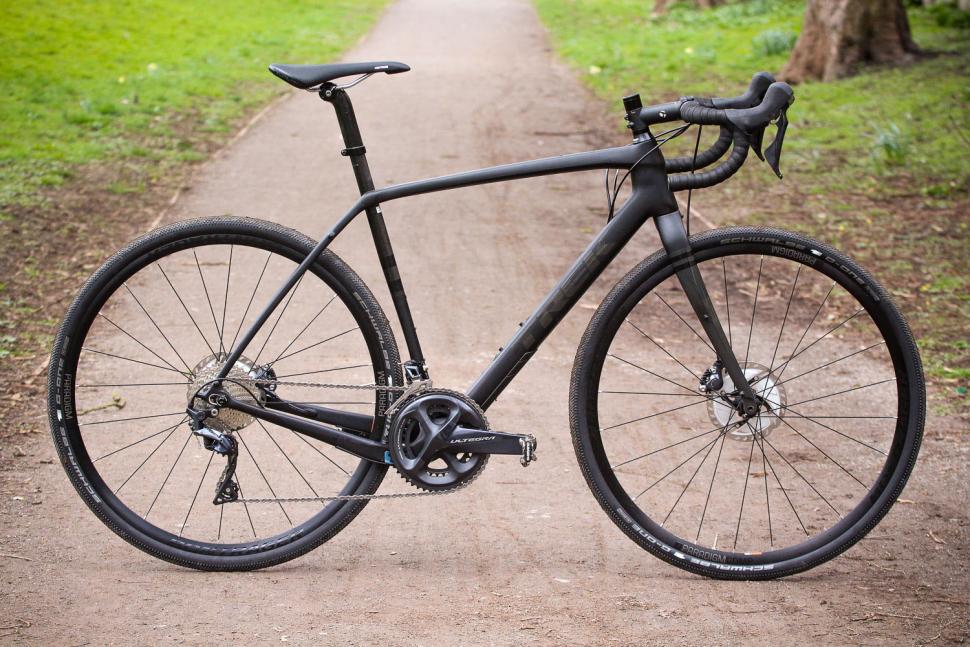
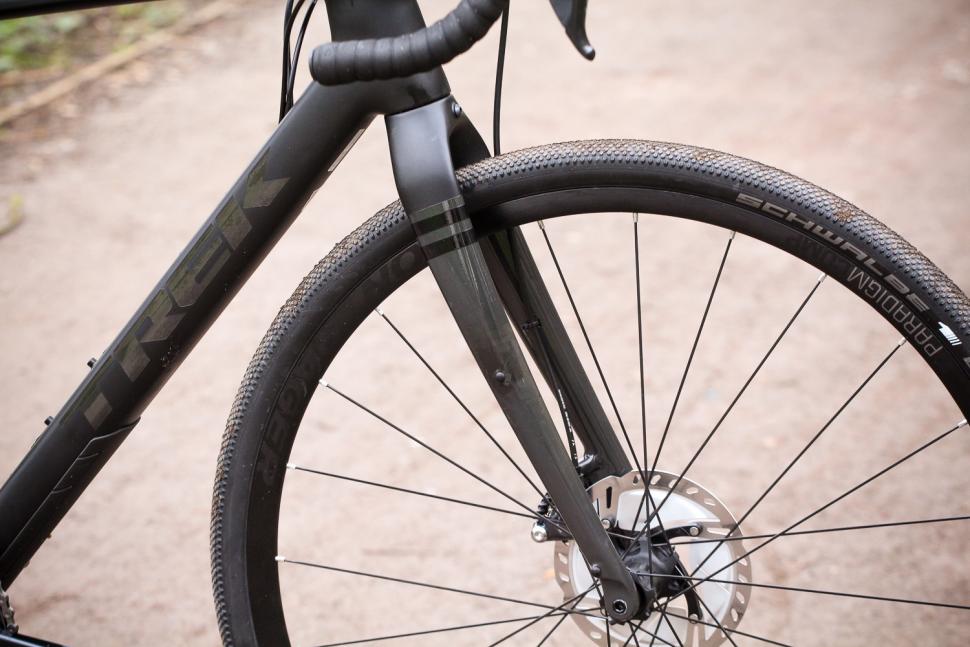

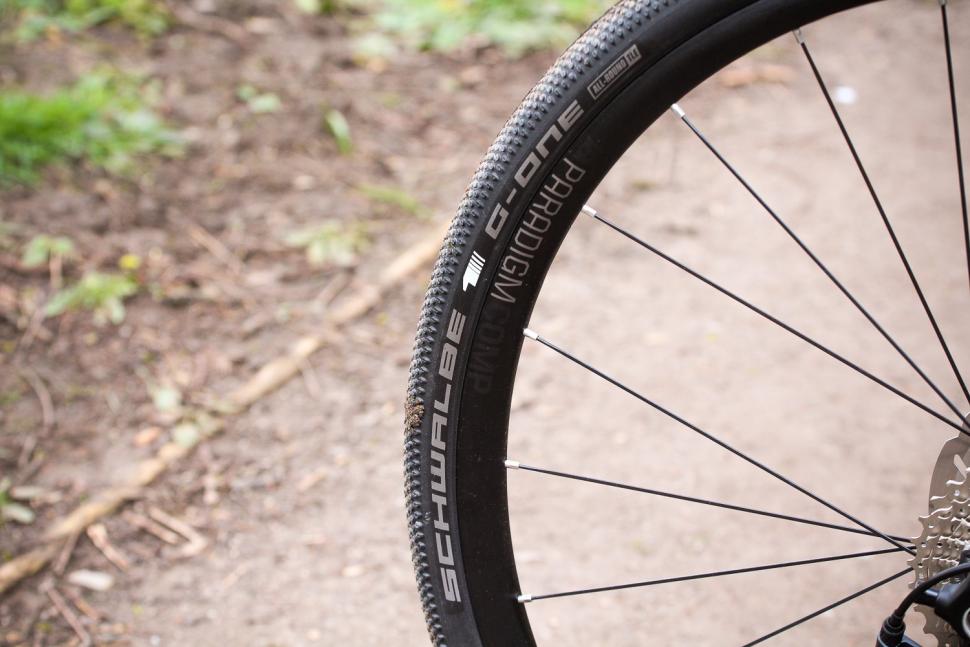
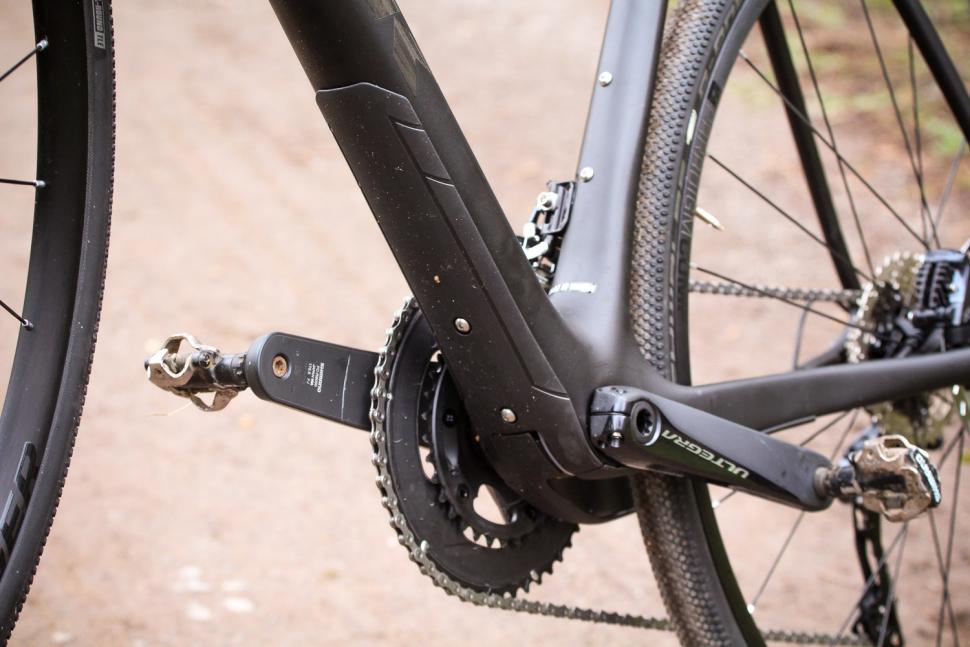
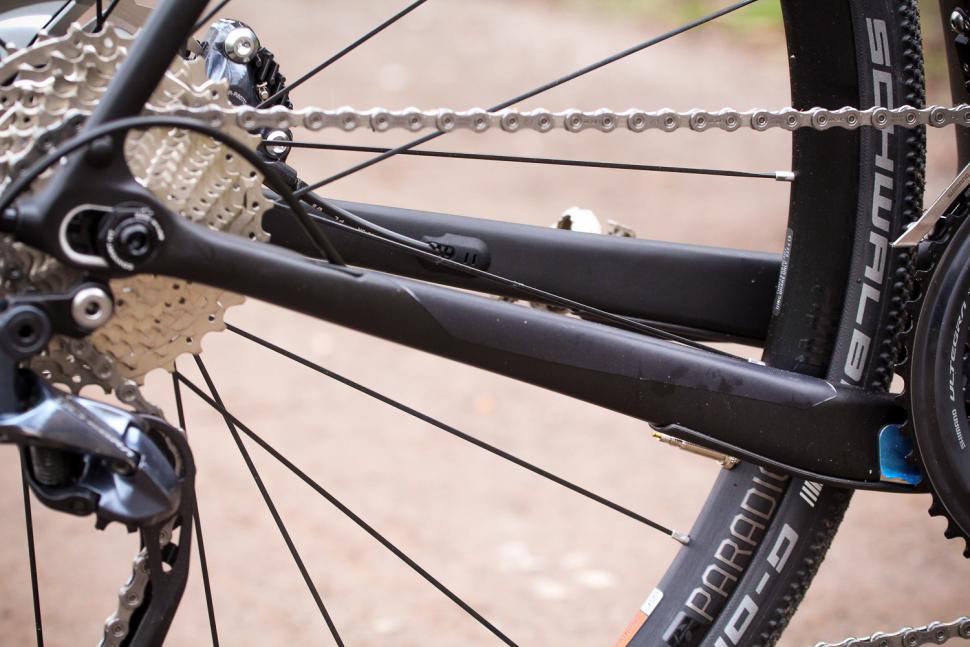
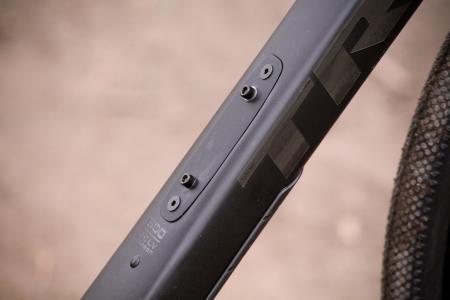
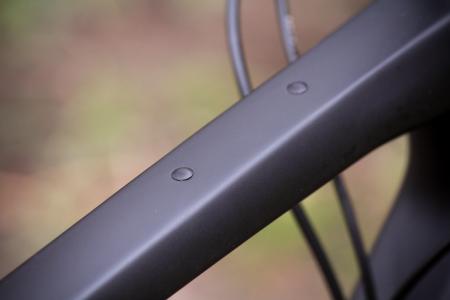

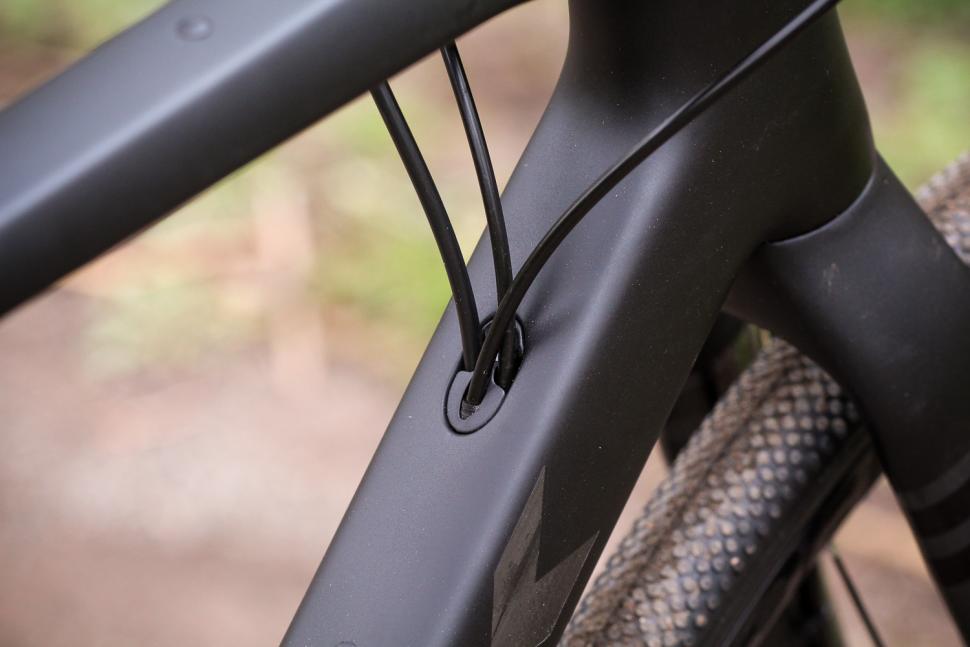
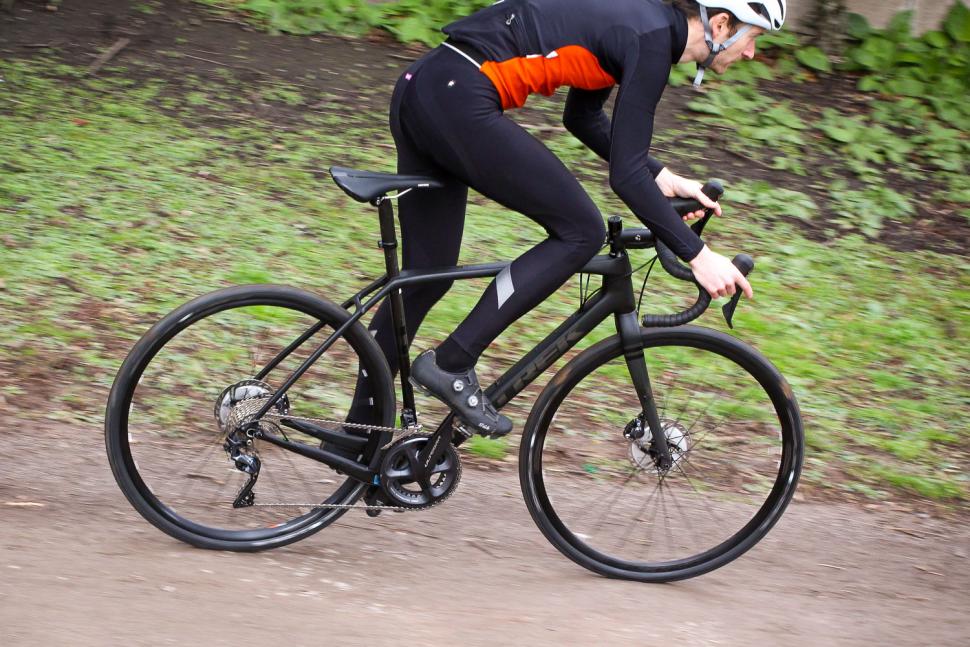
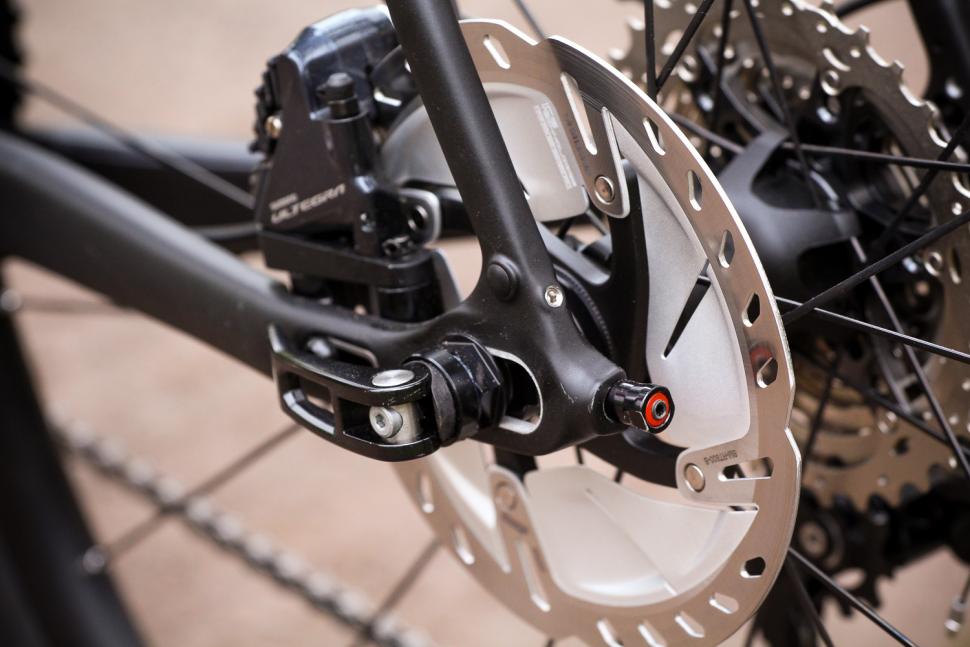
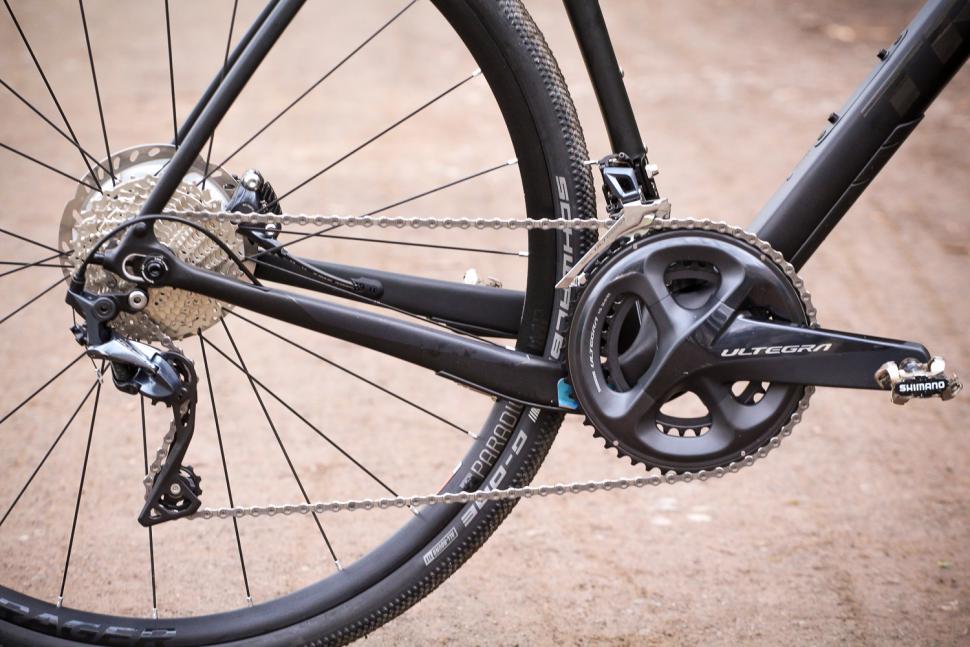
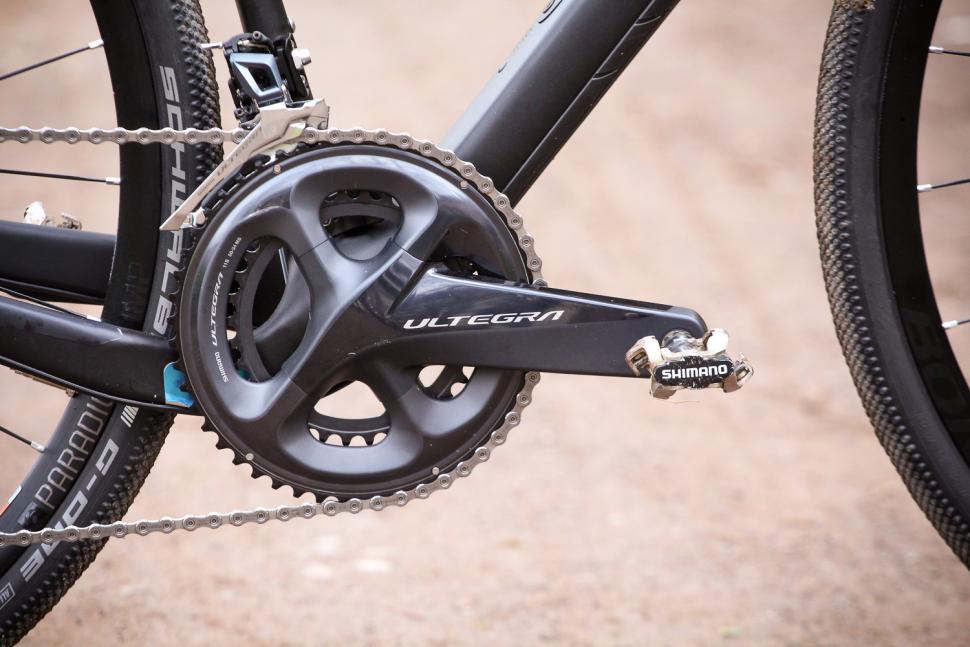
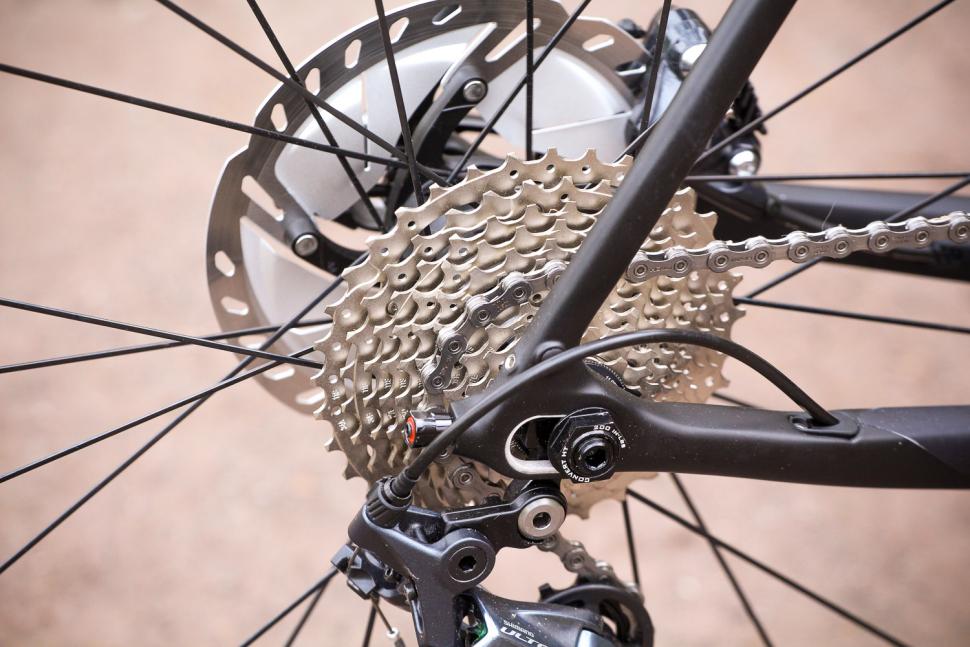
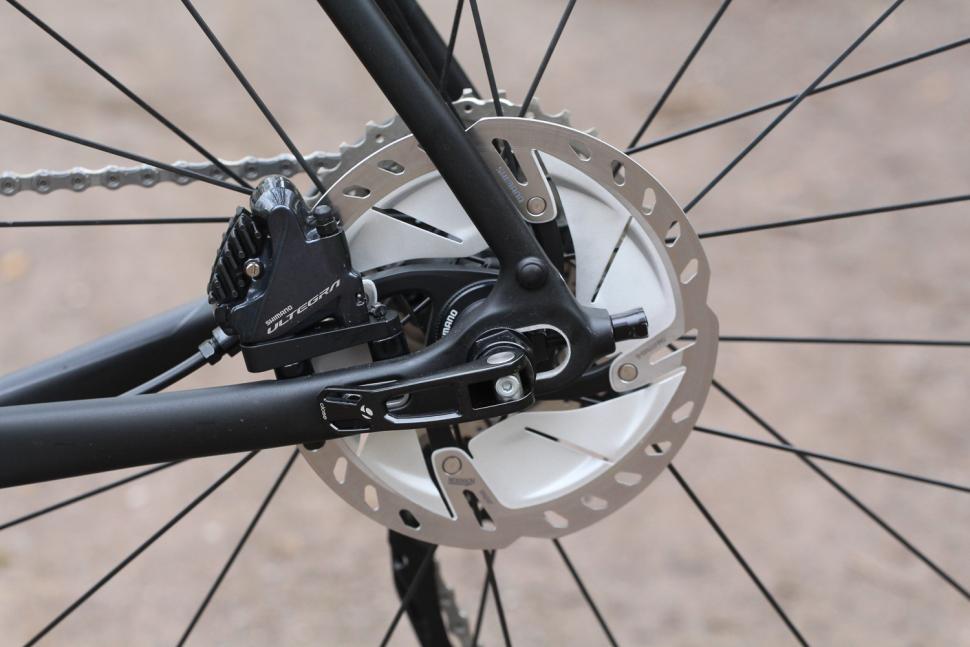
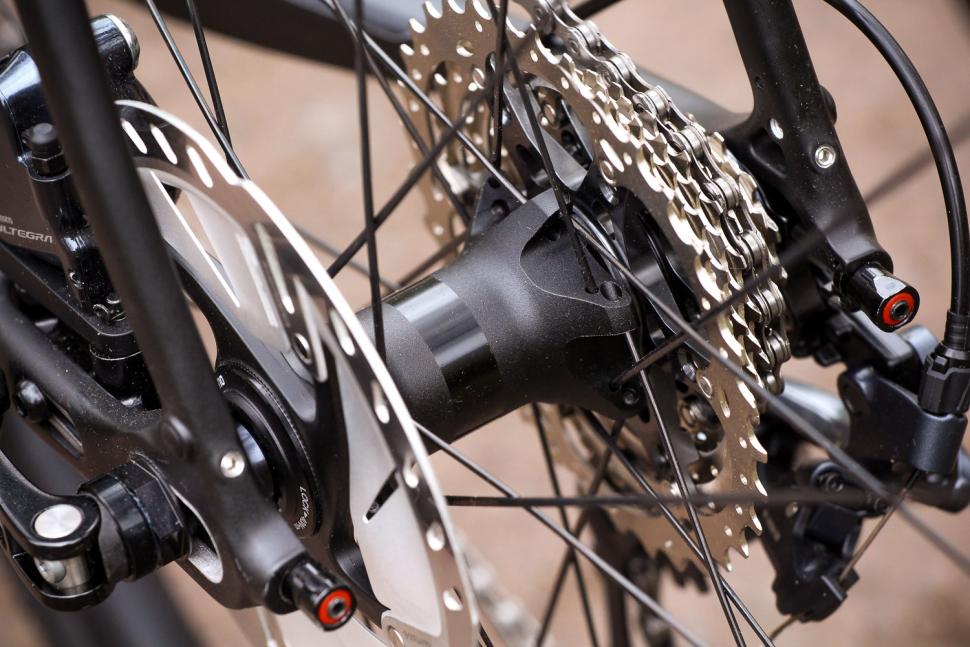


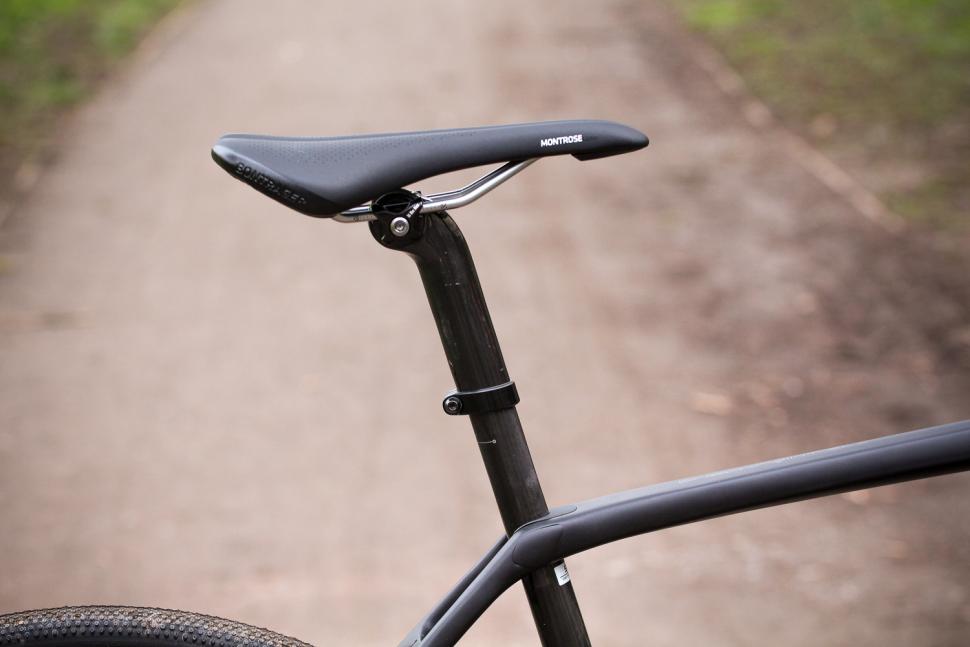

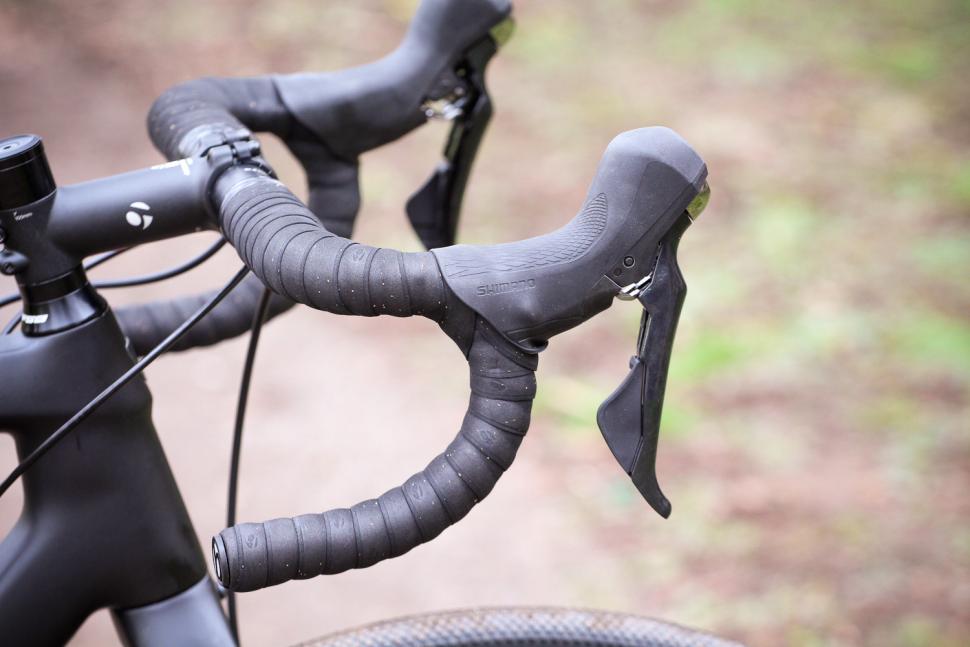
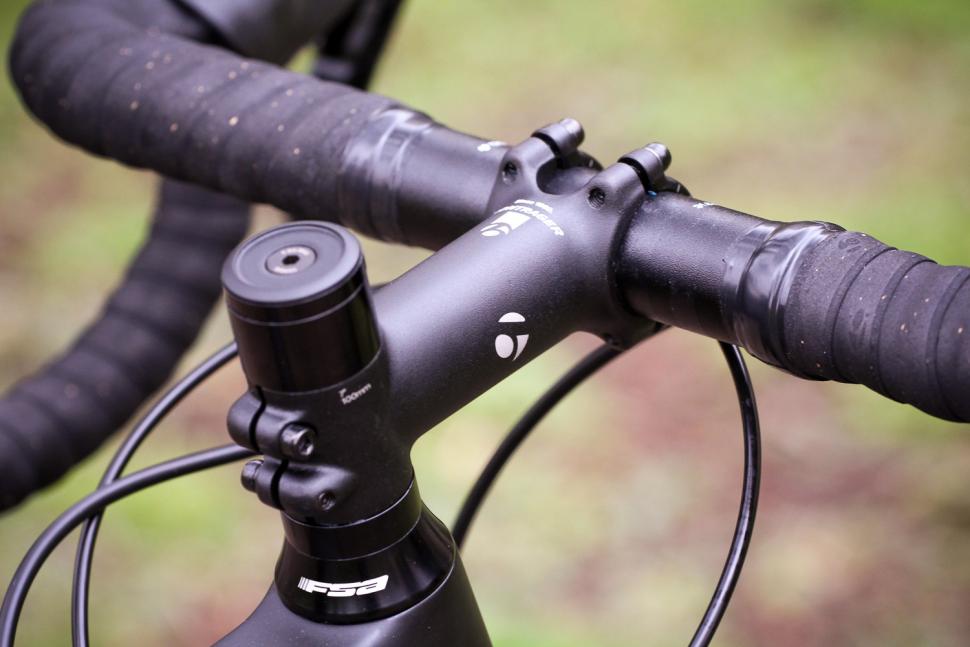

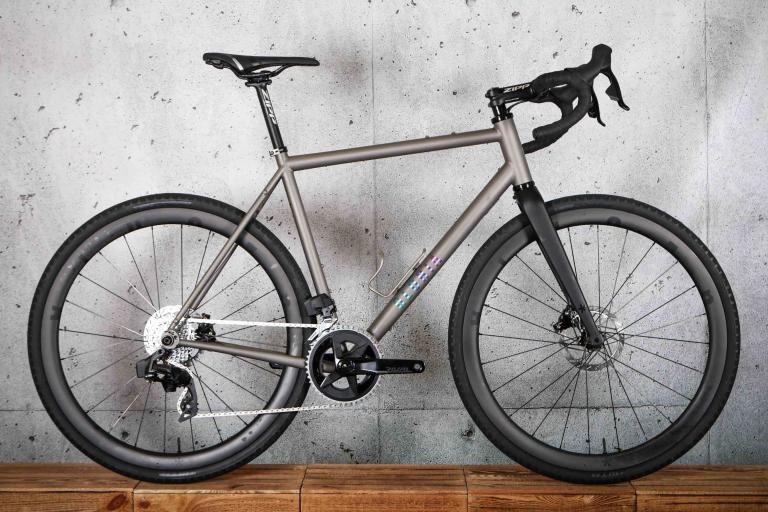
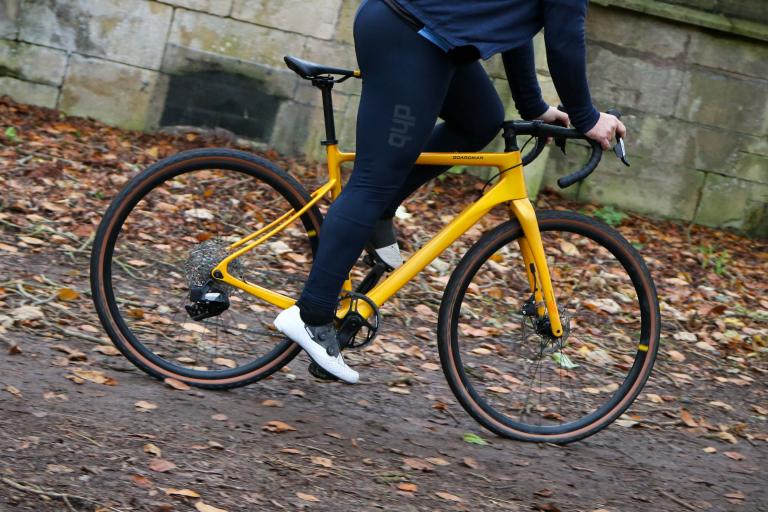
Add new comment
10 comments
https://www.youtube.com/watch?v=YBYZQUa9SNk
I've had my SL6 for about 3 months now. I've ridden a couple of races/fondos; one was a 60-mile all-gravel, and one a 90-mile mix of gravel and road. The bike's all-day comfortable, fast, stable, and fun to ride. In addition, as you point out, it's quite versatile; it works well as a commuter, road bike, gravel bike and gravel racer. I do agree that the front end is stiff, I'd also add that the bike's a bit on the heavy side.
On the other hand, I wonder about marking a bike down because of the tires and rear casette. I run a variety of tires on each of my bikes (road, cross, gravel and mountain) depending on conditions, use, time of year, etc. I also swapped out the 34T rear casette on the Checkpoint with a 36T. It shifts well and climbs like a dream. Again, swapping casettes is easy, and I've done the same on most of my other bikes depending on the use/ride.
What would be more useful would be a comparison to bikes in the same category/price range. Are similarly spec'd and priced bikes more compliant up front? More comfortable? Faster? More/less stable?
To be clear, i thought it was a great review, as my post makes clear. Its good to be unbiased and critical. My points after that were just part of normal debate. David Arthur's reviews are always a good, detailed read.
This review doesn't reflect international press on this particular bike and reminds me of a similar review a few Years back by Dave on the Trek Domane. I can only conclude that he's not a big Trek fan.
The Domane SLR I gave four stars to and said was fun and fast, you mean? http://road.cc/content/review/187715-trek-domane-slr-6
Nothing to do with being a fan or not. Doesn't matter what the sticker on the downtube says
No the model before that, the SLR was an improvement.
I ride gravel, I prefer to call it mixed terrain cycling and own a Checkpoint. So your somewhat negative report contradicts my own experience and that of others. James Huang's review on Cyclingtips and Ben Delaney's on Bikeradar. For the UK larger volume tyres and sub compact gearing make a lot of sense.
Agree with jterrier- pretty harsh review here... If I have understood correctly the main criticisms are it being overgeared, having narrow tyres and a harsh front end. It is compared unfavourably to bikes such as the Silex, Exploro, Up, Tripster AT, Ruut, Diverge, Silex and Hook. 3 of these are sold as framesets rather than full bikes so you can't compare the gearing or tyre choices there. Of the others the Silex has the same width tyres and even higher gearing (awarded 4.5 stars), the Hook has larger tyres but even higher gearing (awarded 4 stars), the Diverge has the same bottom gear and slightly wider (38c) tyres (awarded 4 stars). Only the Ruut actually has wider tyres and a lower bottom gear than the Checkpoint. The Checkpoint's clearances are actually bigger than eg the Diverge if you are choose to do a tyre switch yourself. Harsh front end is something else but the equipment criticisms seem inconsistent with previous road/off-road.cc reviews. It is nice to read reviews that are critical for once rather than just gushing about expensive bikes and it would be great if this level of criticism could be consistently applied to more future reviews.
Dislaimer- I have never ridden a Trek Checkpoint
I feel it was a fair and balanced review.
On the gearing, there's no place on a gravel/adventure bike for a 50/34t compact chainset in my mind, better would have been a 48/32t or 46/30t sub-compact chainset, but Shimano doesn't make one of those yet. With 1x you can more easily adjust the gears by swapping out the chainrings to suit your local terrain.
That's for riding proper off-road trails which usually means ruddy steep climbs in my experience. If you're sticking to flat roads and tracks though the gearing is probably fine
Thanks for the reply- guess my post was a bit over the top... My point was just that 35c tyres and 1:1 bottom gear was deemed ok for the other bikes this was compared (unfavourably) to. I 100% agree 50/34t 11-34 is overgeared for off road (and on road for most).
This is a pretty forthright review (which is a good thing, definitely). Maybe it is intended as a gravel race bike, as opposed to a gravel endurance bike, for adventure. The gear range thing is quite subjective too; it does have a 1:1 gear ratio at the bottom, so it is only the same as if it was SRAM 1x with a 42t chainring. It sounds like the existing tires are a limit factor too, but obviously they can be changed.